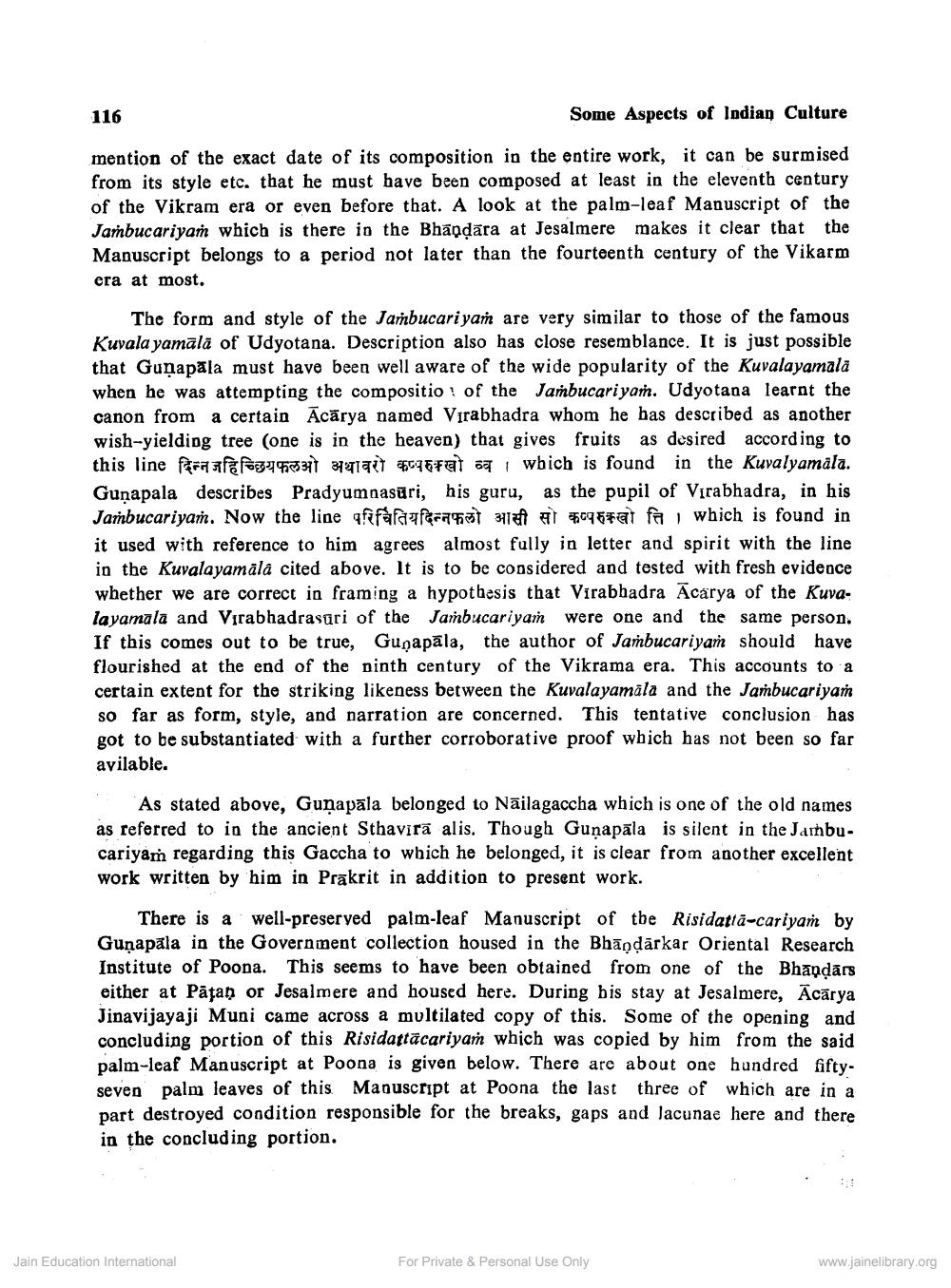________________
116
Some Aspects of Indian Culture
mention of the exact date of its composition in the entire work, it can be surmised from its style etc. that he must have been composed at least in the eleventh century of the Vikram era or even before that. A look at the palm-leaf Manuscript of the Jambucariyan which is there in the Bhandara at Jesalmere makes it clear that the Manuscript belongs to a period not later than the fourteenth century of the Vikarm era at most.
The form and style of the Jambucari yan are very similar to those of the famous Kuvala yamala of Udyotana. Description also has close resemblance. It is just possible that Guņapala must have been well aware of the wide popularity of the Kuvalayamala when he was attempting the compositio ! of the Jambucariyam. Udyotana learnt the canon from a certain Ācārya named Virabhadra whom he has described as another wish-yielding tree (one is in the heaven) that gives fruits as desired according to this line दिन्न जहिच्छियफलओ अथावरो कप्परुक्खो व्व । which is found in the Kuvalyamala. Gunapala describes Pradyumnasūri, his guru, as the pupil of Virabhadra, in his Jambucariyam. Now the line परिचितियदिन्नफलो आसी सो कप्परुक्खो त्ति । which is found in it used with reference to him agrees almost fully in letter and spirit with the line in the Kuvalayamāla cited above. It is to be considered and tested with fresh evidence whether we are correct in framing a hypothesis that Virabhadra Acarya of the Kuvalayamala and Virabhadrasari of the Jambucariyam were one and the same person. If this comes out to be true, Guņapāla, the author of Jambucariyam should have flourished at the end of the ninth century of the Vikrama era. This accounts to a certain extent for the striking likeness between the Kuvalayamala and the Jambucariyan so far as form, style, and narration are concerned. This tentative conclusion has got to be substantiated with a further corroborative proof wbich has not been so far avilable.
As stated above, Guņapāla belonged to Nāilagaccha which is one of the old names as referred to in the ancient Sthavira alis. Though Gunapāla is silent in the Jambucariyam regarding this Gaccha to which he belonged, it is clear from another excellent work written by him in Prakrit in addition to present work.
There is a well-preserved palm-leaf Manuscript of the Risidatta-cariyam by Guņapala in the Government collection housed in the Bhādārkar Oriental Research Institute of Poona. This seems to have been obtained from one of the Bhandārs either at Pāšan or Jesalmere and housed here. During bis stay at Jesalmere, Ācārya Jinavijayaji Muni came across a multilated copy of this. Some of the opening and concluding portion of this Risidattācariyar which was copied by him from the said palm-leaf Manuscript at Poona is given below. There are about one hundred fiftyseven palm leaves of this Manuscript at Poona the last three of which are in a part destroyed condition responsible for the breaks, gaps and lacunae here and there in the concluding portion.
Jain Education International
For Private & Personal Use Only
www.jainelibrary.org




